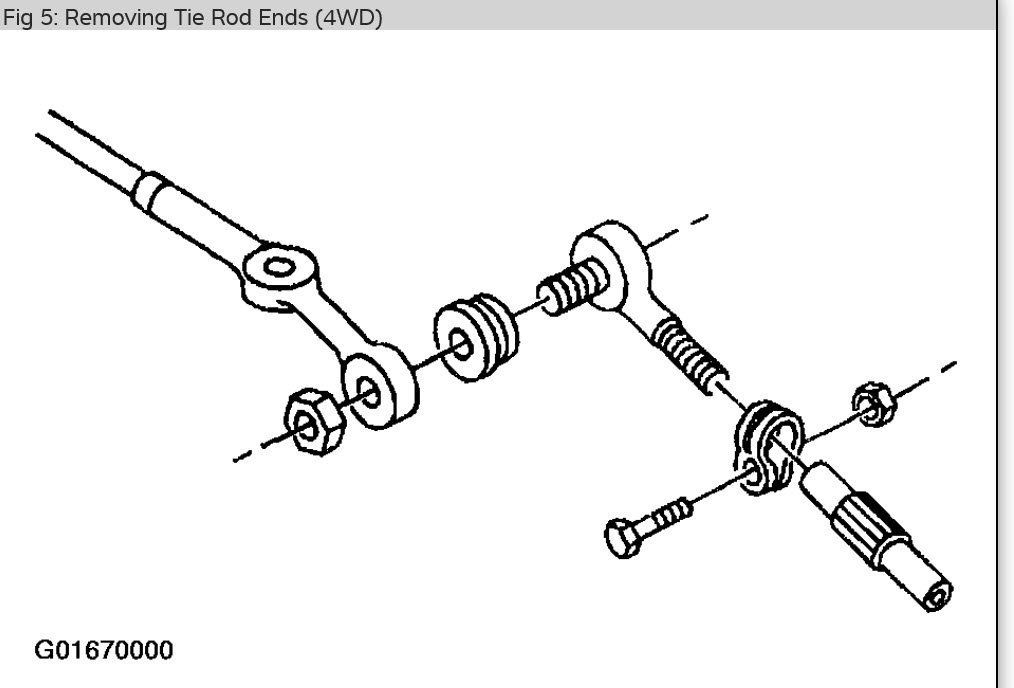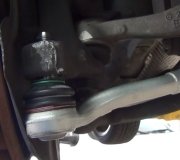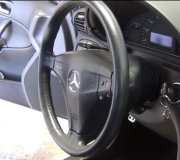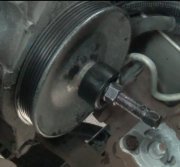You're a goofball. HMAC 300 is being too tactful when he told you to get a professional alignment. The string trick is only done on race cars in the pits. They were previously set up in the shop with an alignment computer or older mechanical gauges. You also must consider that you're measuring at the fronts and rears of the tires. Alignment specs are measured at the fronts and rears of the wheel lips. We measure "total toe" to a hundredth of an inch. A common spec for good tire wear is 0.12" toe-in plus or minus 0.06". You'll be real lucky to get within 0.50" with a string that can be stretched. Also, asphalt race car tires don't have grooves in the tread. That makes scribing lines around them pretty easy. With dirt-track tires, toe is not very critical.
At the risk of helping you avoid having a proper alignment done in the future, I have a trick I can share. When you are starting with a perfectly centered steering wheel, replace only the one or both tie rod ends on one side of the truck first. Drive it to see where the steering wheel is on a straight road. If it is to the left, turn the adjuster for the new tie rod end(s) to turn that wheel to the left to match the steering wheel. (On GM trucks, the outer tie rod end has normal threads. The inners have reversed threads). Drive the truck each time and repeat that until the steering wheel is straight again. It can only be straight when that wheel is put back exactly where it was. Now do the same thing to the other side if that side also needs one or both tie rods replaced. This will get you close enough that the truck can be driven to the alignment shop.
If you don't follow my trick, once you have tie rod ends replaced on both sides, there is absolutely no way to center the steering wheel and get total toe correctly set. Even if you get close, take the truck for a proper alignment. If you go to the same shop as before, they might make you a deal since you were there recently, or if you ask to only have toe adjusted. Be sure to tell them about the new tie rod ends. When they replace parts, they take on the responsibility for proper installation. When you replace parts, they are free of the liability for that, but they are still going to check your work and look for problems. The most common do-it-yourselfer mistake has to do with how far each tie rod end is screwed into the adjuster sleeve. Typically on this model that is 28 turns, but it can vary a lot. You don't want one with only a half dozen threads engaged when the final adjustment is finished.
Another problem is when the inner tie rod end's ball and stud is swiveled fully in one direction to the point it can't go any further, and the outer one is swiveled fully the other way. To verify that has not happened, once the adjuster clamps are tightened, try to swivel it both ways. There needs to be that free movement to prevent binding during turns and when the suspension moves up and down.
You'll typically get a printout of the alignment. Look at the "Before" numbers, meaning before any adjustments were made. Those will show how far off your string method was. Don't be concerned with individual toe at this point. The procedure to take the initial readings ends with setting both front wheels straight ahead and turned a little to either side roughly an equal amount, with no regard at this time as to where the steering wheel is.
Also be aware when installing the cotter pins, if the holes don't line up with the castle nuts' notches, always tighten the nut more until they do. When people loosen a nut is when the stud can work loose. A loose stud wears and hammers on the tapered hole and deforms it. The only proper repair for that is to again replace the tie rod end and the center link or spindle. A new tapered stud will not seat properly in a deformed hole and can snap off.
Also be aware if "camber" was not adjusted to proper specs during the previous alignment, it can cause excessive tire wear on the inner or outer edge of that tire's tread. What happens to one tire won't affect wear on the other tire. However, unequal camber causes a pull when you let go of the steering wheel, so that is a clue. If both front tires are tipped out too far on top, the two pulls can offset each other, but each tire will have accelerated wear on their outer edges.
Total toe also causes accelerated wear to the edges of the tread, but unlike with camber, it doesn't matter if one or both wheels are misadjusted. Total toe wear always affects both tires equally, and the steering wheel can be centered or not.
Incorrect total toe, which is what you're going to have with the string adjustment, WILL cause excessive tire wear on the same edges for both tires. Incorrect camber CAN cause the same two wear patterns. My reason for mentioning this is both can take a lot of miles to show up to where the alignment specialist can "read" those patterns. Suppose you find both outer edges worn down to the cords a couple of months from now. Is it because you fiddled with a string and left it there, or is it because camber was not set correctly at the last alignment? We expect you to come back if you see that wear, and if it was our fault, we will realign the truck for free. Good luck convincing us it was our fault once we see how messed up your total toe is.
Your truck has a well-known history for eating upper ball joints, and GM idler arms do need to be replaced quite often, but other than that, your truck is a lot newer than anything I drive every day. There is no reason to not do a proper alignment. That will cost less than buying front tires over and over.
Friday, December 9th, 2016 AT 8:41 PM




